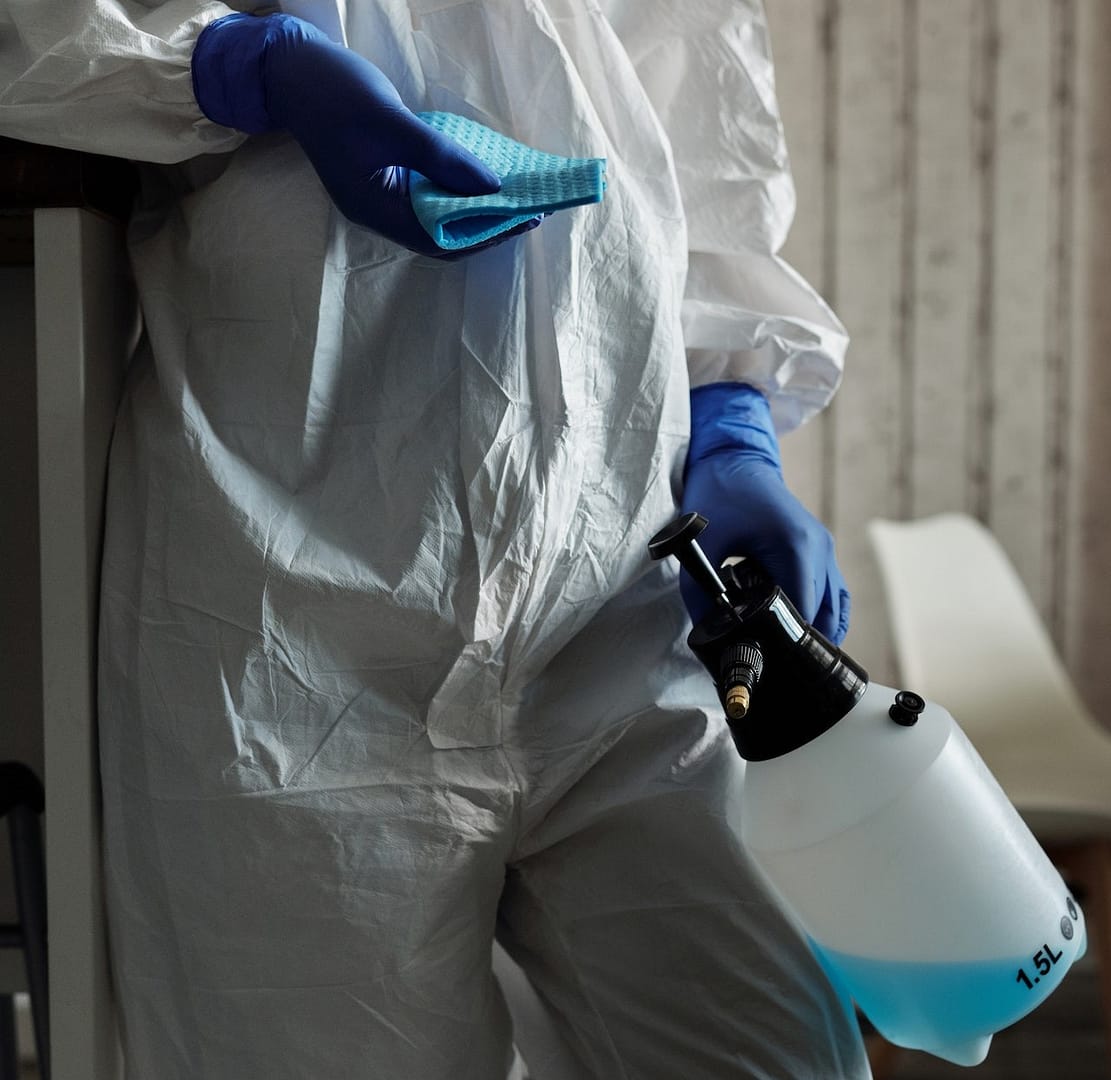In today’s fast-paced industrial landscape, the safe handling of hazardous materials in the workplace is of paramount importance. Whether you work in a chemical plant, a laboratory, or even a restaurant kitchen, the presence of potentially dangerous substances is a reality that must be addressed. In this article, we will delve into five essential steps to ensure the safe handling of chemicals, along with the basic requirements that every workplace should adhere to. We will also highlight the steps you should take when making an accident at work claim.
The Vital Importance of Safe Handling
Before we dive into the specifics of safe chemical handling, let’s underscore the gravity of the issue. Hazardous materials, often referred to as hazardous chemicals or hazardous substances, encompass a broad range of compounds that can pose risks to human health, property, and the environment. These materials can include toxic chemicals, flammable substances, corrosive agents, and even biological hazards.
Imagine you work in a laboratory, and your task is to handle a potent corrosive substance like concentrated sulfuric acid. Mishandling it could result in severe chemical burns, environmental contamination, and long-term health issues. Or perhaps you’re in a manufacturing setting where flammable solvents are used; a small mistake can lead to a catastrophic fire. This is why understanding and implementing safe handling procedures are critical.
5 Things to Ensure Safe Handling of Chemicals
Know Your Chemicals
The first and foremost step in safe chemical handling is getting to know the substances you’re working with. Each chemical has its unique properties, hazards, and safe handling guidelines. This is where Safety Data Sheets (SDS), formerly known as Material Safety Data Sheets (MSDS), come into play. These documents provide comprehensive information about a chemical, including its properties, health hazards, safe storage requirements, and emergency response measures.
For instance, if you’re dealing with a chemical solvent, the SDS will inform you about its flammability, toxicity, and recommended personal protective equipment (PPE). By studying the SDS, you gain a deeper understanding of the risks associated with the chemical and how to mitigate them.
Proper Storage
Safe storage of hazardous materials is the next crucial step. The storage area should be well-ventilated, secure, and clearly marked with hazard symbols and warning signs. Chemicals must be stored according to their compatibility, ensuring that incompatible substances are kept apart to prevent accidental reactions.
Consider a scenario in a chemical warehouse where strong acids and bases are stored on adjacent shelves. Without proper segregation, a leak from one container could lead to a dangerous chemical reaction with the neighbouring substance. To avoid such situations, proper labelling and storage procedures are essential.
Use Appropriate Personal Protective Equipment (PPE)
Personal protective equipment (PPE) is your last line of defence when handling hazardous materials. It includes items such as gloves, safety goggles, lab coats, and respirators, among others. The choice of PPE depends on the specific hazards associated with the chemicals you’re working with.
For example, when handling a volatile chemical that emits harmful vapours, wearing a respirator with the appropriate cartridge is essential. In contrast, working with corrosive substances requires acid-resistant gloves and eye protection to prevent contact with skin and eyes. Always ensure that your PPE is in good condition and fits properly, providing maximum protection.
Proper Handling Techniques
Safe chemical handling extends to the techniques and practices used during tasks involving these materials. It’s crucial to follow established procedures and protocols. Never take shortcuts or bypass safety measures, as this can lead to accidents and injuries.
Let’s take the example of transferring a chemical from one container to another. Always use the correct equipment, such as a funnel or a pump, to minimise the risk of spills. Avoid overfilling containers, as this can lead to leaks and chemical exposure. Additionally, if a spill does occur, follow the appropriate spill response procedures outlined in the SDS to contain and neutralise the spill safely.
Emergency Preparedness
No matter how careful you are, accidents can still happen. That’s why it’s essential to have robust emergency preparedness measures in place. This includes having readily accessible first-aid kits, eyewash stations, and emergency showers in areas where chemicals are handled. Employees should be trained in emergency response procedures, including how to use safety equipment and evacuate the area if necessary.
Consider a laboratory where a researcher accidentally spills a corrosive acid on their hand. Immediate access to an eyewash station can make the difference between a minor incident and a severe injury. Timely and appropriate response can prevent the situation from escalating.
Basic Requirements for Safe Handling and Use of Chemicals
In addition to the five key steps mentioned above, there are fundamental requirements that every workplace should adhere to when it comes to the safe handling and use of chemicals. These requirements are designed to create a safe and healthy working environment for employees.
Risk Assessment
Before introducing any hazardous materials into the workplace, a thorough risk assessment should be conducted. This assessment evaluates the potential hazards associated with the chemicals and identifies control measures to mitigate these risks. It’s a proactive approach to preventing accidents and incidents.
Training and Education
Proper training and education are vital for all employees who handle or work near hazardous materials. This includes understanding the properties and hazards of the chemicals, safe handling procedures, emergency response, and the proper use of PPE. Regular training sessions and refresher courses should be provided to keep employees up-to-date with the latest safety protocols.
Labelling and Identification
Every chemical container must be clearly labelled with information that includes the chemical’s name, hazard warnings, and pictograms. This labelling ensures that employees can easily identify the contents and associated risks. Additionally, colour-coding and labelling systems should be consistent throughout the workplace to avoid confusion.
Ventilation and Engineering Controls
Adequate ventilation and engineering controls, such as fume hoods and exhaust systems, are essential in areas where hazardous materials are used. These controls help to minimise exposure by removing harmful fumes, vapours, and dust from the work environment. Proper maintenance and regular checks are necessary to ensure these systems function effectively.
Waste Disposal
Safe disposal of hazardous waste is a critical aspect of chemical handling. Employers must establish procedures for the proper collection, storage, and disposal of chemical waste. This includes following regulations and guidelines for hazardous waste disposal set forth by regulatory agencies.
Making an Accident at Work Claim with National Claims
At National Claims, we understand that accidents in the workplace can have far-reaching consequences. When it comes to handling hazardous materials, ensuring your safety is the top priority. However, accidents can still happen despite all precautions. In such unfortunate instances, you have the right to seek compensation for any injuries or damages suffered as a result of the accident.
How We Can Help
National Claims is here to guide you through the claims process related to the safe handling of hazardous materials. Our team of experienced solicitors specialises in workplace injury cases, including those involving chemical exposure, fires, spills, and other incidents tied to hazardous materials.
Initial Consultation
The first step in making a claim with National Claims is to schedule an initial consultation. During this meeting, we will gather essential information about your case, including the circumstances of the accident, the extent of your injuries, and any financial losses you may have incurred. This consultation is entirely confidential, and there is no obligation to proceed with a claim.
Case Evaluation
After our initial consultation, our legal experts will carefully evaluate the details of your case. This includes assessing liability, gathering evidence, and determining the potential value of your claim. We will provide you with a clear understanding of your chances of success and the compensation you may be entitled to.

Conclusion
In conclusion, safe handling of hazardous materials in the workplace is a matter of utmost importance. By following the five key steps outlined in this article and adhering to basic safety requirements, employers can create a safer work environment for their employees. However, accidents can still occur, and in such cases, it’s essential to know your rights.
National Claims is here to support you in your journey toward fair compensation in the event of a workplace accident involving hazardous materials. Our team of experienced solicitors is dedicated to providing you with expert legal representation and guiding you through the claims process with compassion and professionalism.
Remember, your safety matters, and your well-being is our priority. If you’ve been injured in a workplace accident related to hazardous materials, don’t hesitate to reach out to National Claims for a confidential consultation. We’re here to help you seek the justice and compensation you deserve, ensuring that you can move forward with confidence and peace of mind.
Contact us to start your claim for your accident at work and speak to one of our claims specialists today.
Click below to see why we are one of the most trusted claims management companies in the UK.

We’re proud of our excellent customer reviews
We thrive on delivering exceptional service and ensuring our clients’ satisfaction. Don’t just take our word for it. Check out some of our independent reviews to see what our clients have to say.
Excellent

This firm is excellent, they sorted out my car pay out and injury claim very fast, they always communicate with you all the time.

My accident case was dealt with confidence and with great result of the outcome, especially James kept me informed all the time.

I was very impressed at the way my inquiry was treated. I was listened to attentively and everything I needed to know was explained to me.






